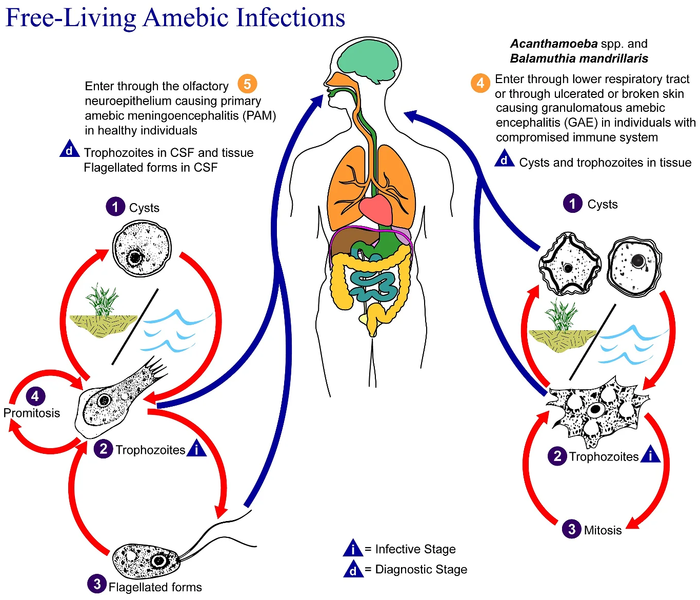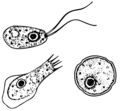Tập tin:Free-living amebic infections.png

Kích thước hình xem trước: 700×600 điểm ảnh. Độ phân giải khác: 280×240 điểm ảnh | 560×480 điểm ảnh | 896×768 điểm ảnh | 1.195×1.024 điểm ảnh | 1.365×1.170 điểm ảnh.
Tập tin gốc (1.365×1.170 điểm ảnh, kích thước tập tin: 715 kB, kiểu MIME: image/png)
Lịch sử tập tin
Nhấn vào ngày/giờ để xem nội dung tập tin tại thời điểm đó.
| Ngày/giờ | Hình xem trước | Kích cỡ | Thành viên | Miêu tả | |
|---|---|---|---|---|---|
| hiện tại | 09:24, ngày 2 tháng 2 năm 2023 |  | 1.365×1.170 (715 kB) | Materialscientist | https://answersingenesis.org/biology/microbiology/the-genesis-of-brain-eating-amoeba/ |
| 06:30, ngày 20 tháng 7 năm 2008 |  | 518×435 (31 kB) | Optigan13 | {{Information |Description={{en|This is an illustration of the life cycle of the parasitic agents responsible for causing “free-living” amebic infections. For a complete description of the life cycle of these parasites, select the link below the image |
Trang sử dụng tập tin
Có 1 trang tại Wikipedia tiếng Việt có liên kết đến tập tin (không hiển thị trang ở các dự án khác):
Sử dụng tập tin toàn cục
Những wiki sau đang sử dụng tập tin này:
- Trang sử dụng tại de.wikibooks.org
- Trang sử dụng tại en.wiktionary.org
- Trang sử dụng tại fi.wikipedia.org
- Trang sử dụng tại fr.wikipedia.org
- Trang sử dụng tại gl.wikipedia.org
- Trang sử dụng tại hr.wikipedia.org
- Trang sử dụng tại is.wikipedia.org
- Trang sử dụng tại it.wikipedia.org
- Trang sử dụng tại pl.wikipedia.org
- Trang sử dụng tại te.wikipedia.org
- Trang sử dụng tại www.wikidata.org
- Trang sử dụng tại zh.wikipedia.org




